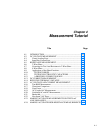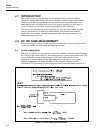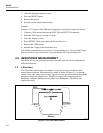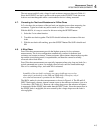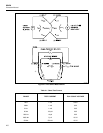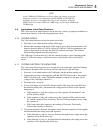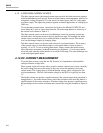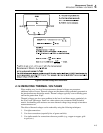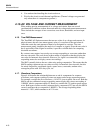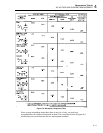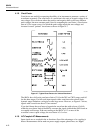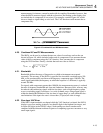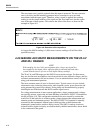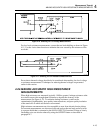
8842A
Instruction Manual
4-8
4-12. A PRECISION CURRENT SOURCE
The ohms current source (the internal current source used in the ohms functions) makes a
useful troubleshooting tool in itself. It has excellent linearity and temperature stability. Its
compliance voltage is typically 5V in the lower five ohms ranges, and 12V in the upper
two ohms ranges. The inputs are protected against accidental applications of voltage up to
300V rms.
To use the ohms current source, connect the test leads to the HI and LO INPUTS, and
select either the 2-wire or 4-wire ohms function. Press the range buttons to select any of
the current levels shown in Table 4-1.
The ohms current source can be used to troubleshoot circuits by injecting current into
selected nodes, forcing the circuits to be in a specific test state. For example, the ohms
current source can be used to set or modify the bias of amplifier circuits. The current
level can be changed simply by changing range.
The ohms current source can also be used to test mA or µA panel meters. The accuracy
of the current source is more than enough to verify panel meters, whose accuracy is
typically 1% to 5%. To test an analog panel meter, simply connect the current source
across the meter movement (as though measuring its resistance). A 1 mA meter should
show full scale when the ohms function is set on the 2 kΩ range. The same technique also
works with digital panel meters.
4-13. DC CURRENT MEASUREMENT
To get the best accuracy using the mA DC function, it is important to understand the
concept of burden voltage error.
When a meter is placed in series with a circuit to measure current, error can be caused by
the small voltage drop across the meter (in this case, across the protective fuses and
current shunt). This voltage drop is called the burden voltage, and it is highest for full-
scale measurements. The full-scale burden voltage for the 8842A is typically less than
1V.
The burden voltage can present a significant error if the current source being measured is
unregulated (i.e., not a true current source) and if the resistance of the fuse and shunt is a
significant part of the source resistance. If burden voltage does present a significant error,
the percentage of error can be calculated and corrected for using the formulas in Figure 4-
5.




